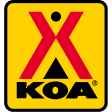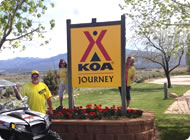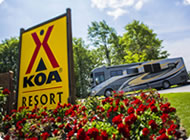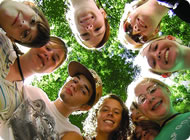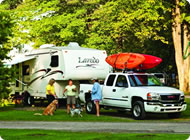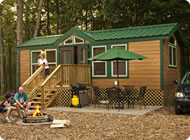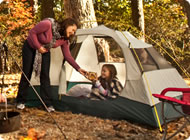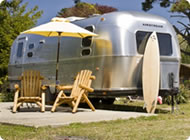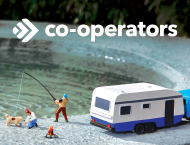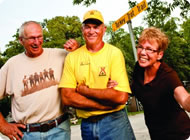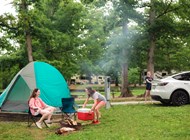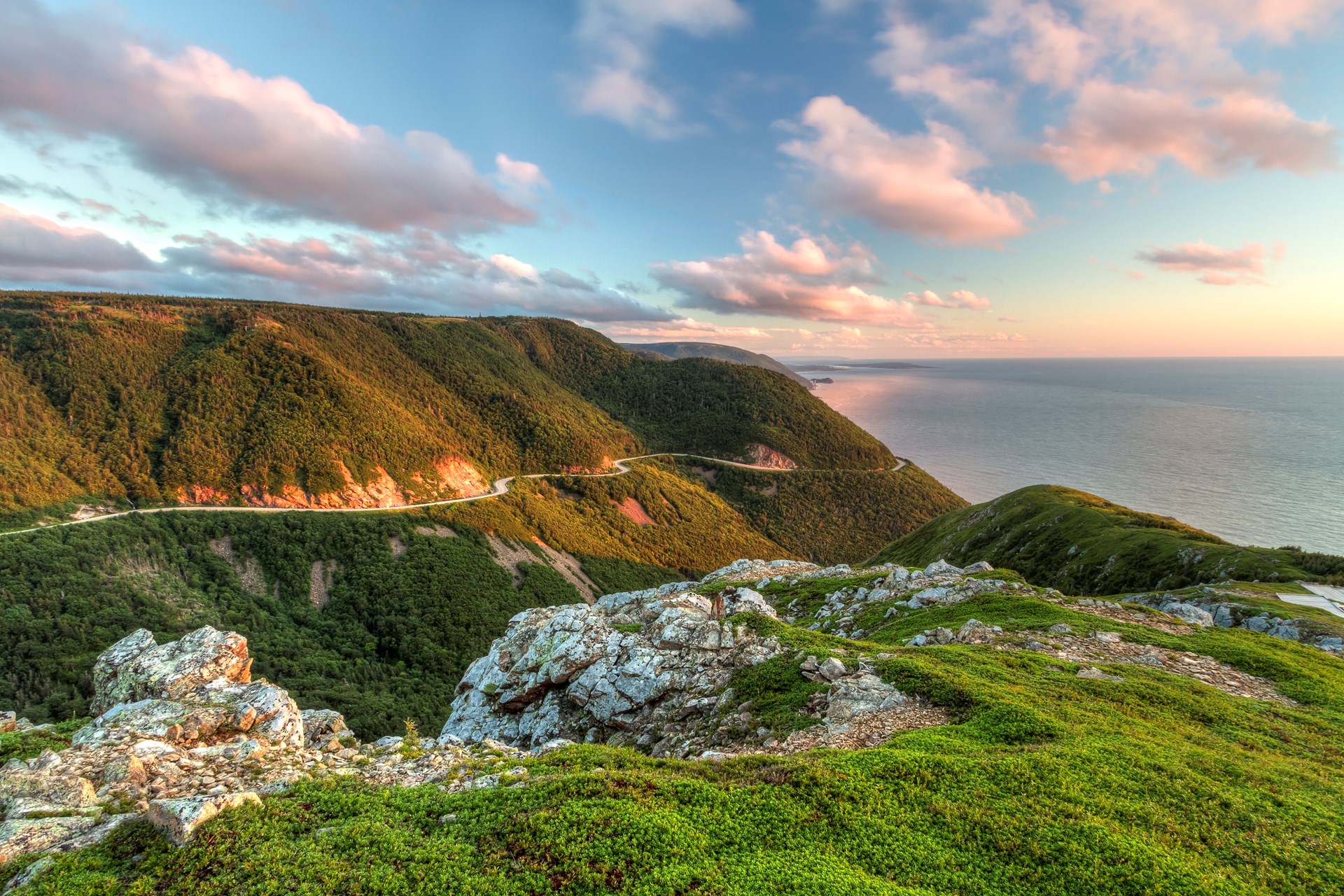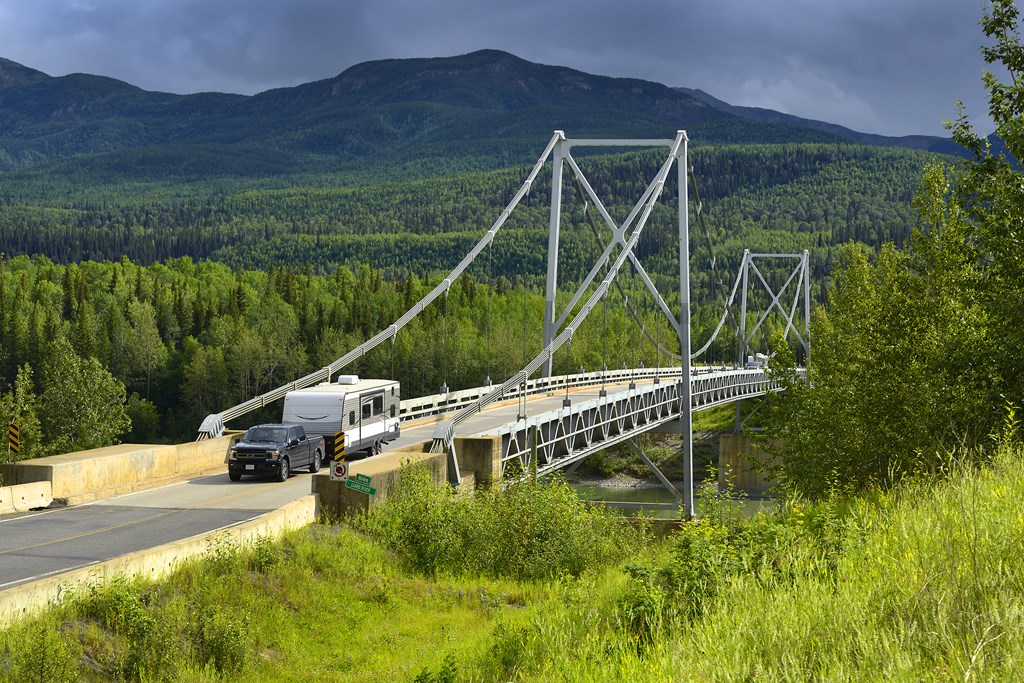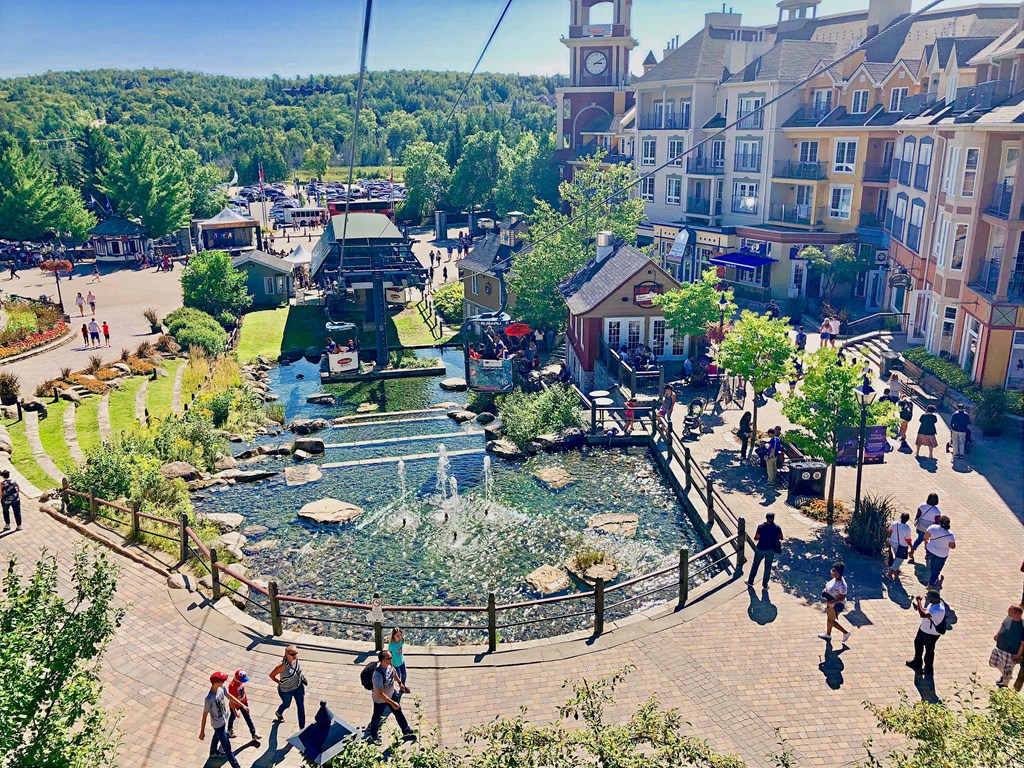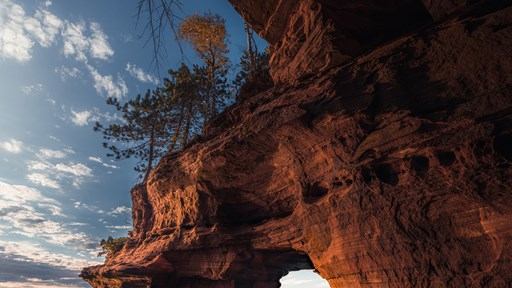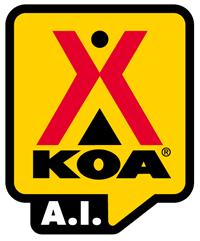Canada has some of the most incredible road trip landscapes in the world. You’ve got the rugged Atlantic coast, the towering Rockies, and serene boreal forests to explore – it’s like the country was made for epic drives.
This guide takes you on a tour of five of Canada’s most amazing driving routes. Each one has its own special flavor. If you’ve got more time, we’ll also suggest some cool route combos for longer trips.
1. Sea-to-Sky Highway, British Columbia: From Ocean Depths to Mountain Peaks
Route: Vancouver to Whistler (Highway 99)
Distance: 120 km (75 miles)
Driving Time: 1.5 hours (without stops)
Best Time to Visit: May to October for optimal road conditions and activities
The Sea-to-Sky Highway earned its poetic name honestly! This relatively short but stunning drive climbs from the sparkling Pacific Ocean into the snow-capped Coast Mountains of British Columbia. Extensively upgraded for the 2010 Winter Olympics, the modern highway combines engineering marvels with natural splendor, making it one of the most accessible yet dramatic mountain drives in North America.
Why RV Travelers Love It
The Sea-to-Sky corridor packs a whole lot of experiences into a short, easy-to-follow route. It starts in Vancouver, a city that’s got it all, from beaches to Stanley Park. But before you know it, you’ll find yourself in the middle of breathtaking coastal and mountain landscapes. And the scenery changes fast – from ocean views to rainforest to alpine meadows in just a couple of hours.
If you’re traveling by RV, this route’s a dream come true. You get the convenience of a modern highway but still feel like you’re on a wild adventure. The road’s got plenty of viewpoints designed to handle larger vehicles, and it connects you to all sorts of adventure hubs with activities for a variety of interests and skill levels.
Must-See Stops
- Horseshoe Bay: A charming seaside village with ferry connections to Vancouver Island and the Sunshine Coast.
- Porteau Cove Provincial Park: Featuring shoreline access, diving opportunities, and stunning views of Howe Sound.
- Shannon Falls: BC’s third-highest waterfall at 335 meters, accessible via a short walk from the parking area.
- Stawamus Chief: A massive granite monolith popular with rock climbers and hikers.
- Sea to Sky Gondola: A 10-minute ride that takes you to 885 meters above sea level for panoramic views and access to hiking trails, suspension bridges, and viewing platforms.
- Squamish: The outdoor recreation capital of Canada, offering world-class mountain biking, hiking, kiteboarding, and eagle viewing.
- Brandywine Falls: A spectacular 70-meter waterfall accessible via a short trail.
- Whistler: A world-renowned mountain resort town with activities ranging from skiing and snowboarding to mountain biking, hiking, and ziplining.
Road Tip Trips
- The highway is well-maintained with multiple lanes in most sections, but it does have some steep sections and curves. Drive cautiously, especially in larger RVs.
- Whistler has strict RV parking regulations in the village center. Use designated RV parking areas on the outskirts and take advantage of the free shuttle service.
- Campgrounds along this route fill up quickly in summer months. Make reservations well in advance, especially for weekends.
- Allow extra time for this drive, as the views and attractions will tempt you to stop frequently.
Nearby KOAs:
Cranbrook/St. Eugene KOA Journey
Lynden/Bellingham KOA Journey
2. Alaska Highway, Yukon & British Columbia: The Ultimate Northern Adventure
Route: Dawson Creek, BC to Delta Junction, Alaska
Distance: ~2,232 km (1,387 miles) total; ~1,600 km (995 miles) in Canada
Driving Time: 7-10 days recommended for the full route
Best Time to Visit: June to early September for optimal weather and road conditions
Built during World War II as a military supply route, the Alaska Highway (also known as the Alcan) is one of North America’s most legendary road trips. The Canadian portion winds through wild, remote, and breathtaking landscapes in northern British Columbia and the Yukon Territory, offering an adventure that feels like traveling back in time to a wilder era.
Why RV Travelers Love It
The Alaska Highway is the ultimate bucket-list road trip for RV enthusiasts who crave adventure. It’s a route that holds a special place in many RVers’ hearts, and for some, it’s a must-do experience. From the sheer scale of the northern Rockies to the untouched wilderness and long summer days, this drive has a certain allure that sets it apart from other road trips in North America.
What really makes this trip unique, isn’t just the endpoint, but the journey itself. You might catch a glimpse of wildlife like bears, moose, or bison along the way, or stumble upon quirky communities with interesting stories to tell. During late summer nights, you can witness the Northern Lights dancing overhead, and there are even natural hot springs hidden away in the boreal forests. Completing this journey is a badge of honor, too – you’ll have navigated one of the most famous routes in North America.
Must-See Stops
- Dawson Creek: The official starting point of the Alaska Highway, featuring the famous Mile 0 Post and the Alaska Highway House Museum.
- Fort Nelson: Gateway to the Northern Rockies and home to the Fort Nelson Heritage Museum with its collection of road-building equipment.
- Liard River Hot Springs: Natural hot springs in a beautiful provincial park setting – the perfect place to relax after a long drive.
- Muncho Lake Provincial Park: A jade-colored mountain lake surrounded by stunning limestone mountains.
- Contact Creek: The historic meeting point of northern and southern construction crews who built the highway.
- Watson Lake Sign Post Forest: A quirky attraction featuring over 80,000 signs from around the world.
- Teslin Tlingit Heritage Centre: Showcasing the culture of the Inland Tlingit people.
- Whitehorse: The capital of Yukon Territory, offering big-city amenities and attractions like the S.S. Klondike National Historic Site.
- Kluane National Park: Home to Canada’s highest peak (Mount Logan) and over 4,000 square miles of glaciers and wilderness.
Road Tip Trips
- While significantly improved from its early days, the Alaska Highway still presents challenges: prepare for some graveled road sections, occasional construction, and potential frost heaves or potholes.
- Gas stations are available but can be far apart – never pass a gas station with less than half a tank, especially in a larger RV.
- Cell service is limited to larger communities. Consider bringing a satellite phone or communication device for emergencies.
- Carry basic tools, spare parts, and emergency supplies. While help is usually available, it may take time to reach remote areas.
- Insect repellent is essential during summer months!
Nearby KOAs:
Cranbrook/St. Eugene KOA Journey
Valdez KOA Journey
Fairbanks/Chena River KOA Journey
3. Icefields Parkway, Alberta: Journey Through the Heart of the Rockies
Route: Lake Louise to Jasper (Highway 93)
Distance: 230 km (143 miles)
Driving Time: 3 hours (without stops – but trust us, you’ll want to stop!)
Best Time to Visit: Late June to early September for optimal weather and road conditions
The Icefields Parkway isn’t just the most iconic drive in Canada – many road trip enthusiasts consider it one of the most spectacular drives on the planet! This section of Highway 93 winds through the very heart of the Canadian Rockies, connecting two world-famous national parks: Banff and Jasper. The route is so packed with photo opportunities that your biggest challenge might be making it to your destination before nightfall!
Why RV Travelers Love It
Icefields Parkway strikes a great balance between being easy to get around and experiencing the great outdoors. The highway is in good condition, suitable for RVs of all sizes, with lots of designated pullouts where bigger vehicles can safely stop. This way, you can pull over to snap incredible mountain reflection photos without causing a traffic jam.
On this drive, you’ll see a huge range of landscapes in a relatively short space. In just a few hours, you’ll take in mountain peaks, glaciers, turquoise lakes, waterfalls, and all sorts of wildlife, from elk and mountain goats to the occasional bear. Many of the best viewpoints are just a short walk from parking areas, making this route ideal for all ages and abilities.
The route passes through some truly breathtaking scenery, with glaciers and mountain peaks at your doorstep. You can get out of your vehicle and take in the views at your own pace, with plenty of opportunities to get some amazing photos.
Must-See Stops
- Bow Lake and Bow Glacier: One of the first major sights when heading north from Lake Louise, this glacier-fed lake offers stunning reflections of surrounding peaks.
- Peyto Lake Viewpoint: A short uphill walk rewards you with a view of one of the most photographed lakes in Canada, shaped like a fox and colored an almost impossible shade of turquoise.
- Columbia Icefield and Athabasca Glacier: The largest ice field in the Rocky Mountains, where you can take guided tours onto the ancient ice or experience the glass-floored Skywalk extending over the edge of a cliff.
- Sunwapta Falls: A powerful waterfall where the Sunwapta River plunges into a limestone gorge.
- Athabasca Falls: Not the highest waterfall, but one of the most powerful in the mountain parks, with viewing platforms that get you close enough to feel the spray.
- Mistaya Canyon: A hidden gem where the Mistaya River has carved an impressive slot canyon.
- Parker Ridge: A moderately challenging 5km round-trip hike that rewards with expansive views of the Saskatchewan Glacier.
Road Tip Trips
- Gas stations are limited along the parkway, so fill up in Lake Louise or Jasper before heading out.
- While the road is well-maintained, it’s steep in sections. Be mindful of your RV’s capacity, especially when climbing to Bow Summit.
- Wildlife viewing is exceptional, but remember to never feed wildlife and maintain a safe distance, viewing from your vehicle when possible.
- The Columbia Icefield Discovery Centre has a large parking lot that can accommodate RVs and provides access to glacier tours and visitor information.
Nearby KOAs:
Hinton/Jasper KOA Holiday
Drumheller/Dinosaur Trail KOA Holiday
Edmonton/Leduc KOA Journey
4. Cabot Trail, Nova Scotia: Where Mountains Meet the Sea
Route: Loop around Cape Breton Island
Distance: 298 km (185 miles)
Driving Time: 5 hours (without stops)
Best Time to Visit: Mid-June to mid-October for optimal weather and fall colors
The Cabot Trail is Atlantic Canada’s crown jewel and one of the world’s great coastal drives. Its winding route loops around northern Cape Breton Island, offering dramatic ocean vistas, steep cliff descents, and highland panoramas that will have you reaching for your camera every few minutes. Named after explorer John Cabot (Giovanni Caboto), this engineering marvel has been thrilling travelers since its completion in 1932.
Why RV Travelers Love It
The Cabot Trail’s design is a complete loop, so you can travel in either direction and never get the same view twice. Locals often say to drive clockwise – that way you’ll be on the ocean side of the road for the most dramatic parts. The route mixes ocean scenery with mountain views as it winds through Cape Breton Highlands National Park. This is where the Appalachian mountain chain drops down to the Atlantic.
The trail isn’t just about the scenery, though. It also goes through communities that are full of Acadian and Gaelic history. Traditional music, crafts, and food add a lot to your experience. The small villages along the way are great places to try seafood, attend a Celtic music gathering (called a ceilidh), or buy handmade souvenirs.
Must-See Stops
- Cape Breton Highlands National Park: The centerpiece of the trail, featuring 26 hiking trails ranging from easy boardwalks to challenging mountain climbs.
- Skyline Trail: A relatively easy 7km loop hike offering spectacular cliff-top views where you might spot whales in the Gulf of St. Lawrence below.
- Ingonish Beach: A unique beach where you can swim in both fresh and saltwater.
- Pleasant Bay: Known as the “Whale Watching Capital of Cape Breton,” offering boat tours to see pilot, minke, and humpback whales.
- Chéticamp: A charming Acadian fishing village famous for its hooked rugs and traditional music.
- Margaree Valley: A salmon fishing paradise with picturesque farms and artisan studios.
- Middle Head Trail: A moderate 4km trail on a peninsula jutting into the Atlantic, offering views of both the Atlantic Ocean and Ingonish Harbor.
- White Point: A fishing community with dramatic ocean vistas and a short walking trail to a scenic lookout.
Road Tip Trips
- While suitable for RVs, some sections of the trail feature steep grades (up to 13%) and sharp curves. Drive cautiously, especially in larger rigs.
- The route has several tight hairpin turns, particularly on the western section between Chéticamp and Pleasant Bay. Take these slowly and use pullouts if traffic builds up behind you.
- Plan fuel stops carefully – gas stations are available in major communities but can be far apart.
Nearby KOAs:
Halifax West KOA
Truro/Tidal Bore KOA Holiday
5. Trans-Canada Highway Through the Laurentians, Quebec: A Quintessential Quebec Experience
Route: Montreal to Mont-Tremblant and beyond (Highway 117)
Distance: ~130 km (80 miles)
Driving Time: 2 hours (without stops)
Best Time to Visit: Late September for fall colors, or year-round for seasonal activities
The Laurentians (Les Laurentides) offer a romantic, forested getaway with charming towns, rolling hills, and crystalline lakes. This scenic stretch of the Trans-Canada Highway showcases Quebec’s distinct European-influenced culture and natural beauty. Though less dramatically vertical than western Canada’s mountain ranges, the gentle, ancient peaks of the Laurentians have a soul-soothing quality that has attracted artists and nature lovers for generations.
Why RV Travelers Love It
The Laurentian region is classic Quebec – you’ll find French signs, European architecture, and outdoor cafes that make you feel alive. Even the roadside stops stand out from the rest of Canada, with bakeries serving fresh treats instead of typical fast food. The route is in great shape and easy to navigate for RVs of any size, with plenty of spots to pull over and take in the views.
This drive is beautiful any time of year, but it’s especially stunning during fall when the maple forests turn red, orange, and gold. The forests are dotted with cozy chalets and lakeside towns, making for a peaceful trip that’ll leave you feeling refreshed. What makes this route unique is that you can easily mix outdoor adventures with cultural and culinary experiences – hike a mountain in the morning, and enjoy a fine French meal that night.
Must-See Stops
- Saint-Sauveur: A charming village with European flair, excellent shopping, and gourmet restaurants.
- Sainte-Adèle: Home to beautiful parks, walking trails, and the famous Au Diable Vert zip line course.
- Sainte-Agathe-des-Monts: A lakeside town offering water activities in summer and cross-country skiing in winter.
- Val-David: An artist’s haven with galleries, studios, and the Regional Park offering hiking and rock climbing.
- Mont-Tremblant National Park: Quebec’s oldest national park, featuring six rivers, over 400 lakes, and extensive trail networks.
- Mont-Tremblant Village: A colorful pedestrian village resembling a European alpine town, offering shopping, dining, and activities at the base of Mont Tremblant.
- P’tit Train du Nord Linear Park: A 200km converted rail trail perfect for cycling in summer and cross-country skiing in winter.
- Domaine Saint-Bernard: An eco-tourism park featuring hiking trails, cross-country ski trails, and an astronomical observatory.
Road Tip Trips
- Some of the smaller villages have narrow streets not suitable for larger RVs. Research your stops in advance or consider parking on the outskirts and exploring on foot.
- Winter road conditions can be challenging. If traveling in winter, ensure your RV is properly equipped and you’re comfortable with winter driving.
- Be prepared for French signage. While many people in tourist areas speak English, having a translation app can be helpful.
- Mont-Tremblant Resort has designated RV parking areas near the pedestrian village, making it accessible even to those traveling in larger rigs.
Nearby KOAs:
Montreal South KOA Journey
Quebec City KOA Holiday
Canada’s amazing drives cater to all kinds of travelers. Planning a quick weekend escape or a long road trip across the country, these five routes are perfect for making unforgettable memories. Every journey offers a one-of-a-kind mix of breathtaking landscapes, cultural experiences, and thrills, so you can tailor your Canadian adventure exactly how you want it. Safe travels – hope your gas tank stays full, your views are stunning, and your campfire tales are legendary!
Leslie is a freelance travel and health/wellness writer who gets butterflies from telling stories and sharing information with readers across the globe. Her voice comes from a place filled with passion and dreams.
With over 10 years of experience in crafting words and years of embarking on travels that have taken this Montana girl to some incredible places, Leslie loves the adventures of both body and mind that her writing takes her on.
To see what Leslie’s up to in the writing and design world, visit her website here.



